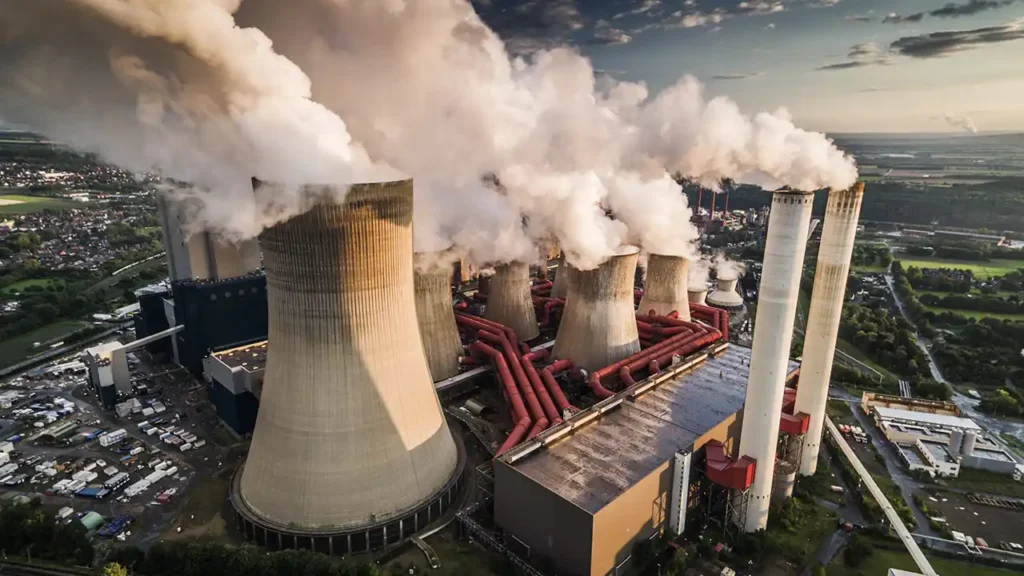In an era dominated by global climate goals and the accelerating push toward net-zero emissions, the coal industry faces a defining question: Can traditional fuels like coal remain relevant in a carbon-regulated economy? As countries tighten climate policies, carbon credit markets are emerging as a double-edged sword presenting both a challenge and an opportunity for coal and other fossil fuels.
This blog explores how carbon credit markets function, the evolving role of coal within this framework, and whether strategic innovations can enable coal to coexist with a net-zero future.

Understanding Carbon Credit Markets
What are Carbon Credits?
Carbon credits are permits that allow a company or country to emit a certain amount of carbon dioxide (CO₂) or other greenhouse gases. One credit permits the emission of one tonne of CO₂ or its equivalent.
Voluntary vs. Compliance Markets
- Compliance Markets are government-regulated markets where companies must offset emissions beyond permitted limits.
- Voluntary Markets allow companies to buy credits to offset emissions proactively, improving their environmental, social, and governance (ESG) ratings.
Coal and Carbon : A Complex Relationship
Coal is one of the most carbon-intensive energy sources. Burning coal for electricity or industrial processes releases significantly more CO₂ compared to oil or natural gas.
Yet, in regions like India, China, and Southeast Asia, coal remains integral due to:
- Cost-efficiency
- Established infrastructure
- Local availability
So the pressing question becomes :
Q : Can coal be part of the net-zero future without being phased out entirely?
A : Yes, but only if its emissions are actively managed and offset through carbon credits or captured via technologies like CCS (Carbon Capture and Storage).
2025 Trends : How Carbon Credit Markets Affect Coal
Carbon prices in compliance markets like the EU ETS (Emissions Trading System) have surged past $90/tonne in 2025. This places financial pressure on coal based power plants and industries unless they :
- Purchase credits
- Reduce emissions via cleaner technologies
2. Rise of Blockchain-Verified Credits
Blockchain is now being used to track the issuance and redemption of credits, improving transparency. Several Indian and Southeast Asian companies are investing in traceable, verified credits to support continued coal operations with better ESG accountability.
3. Hybrid Models Emerging
Many industries are now mixing coal with biomass or hydrogen, reducing the net emissions. This hybrid fuel usage makes them eligible for partial carbon credit exemptions or discounts.
Strategic Adaptation for the Coal Sector
A. Invest in Carbon Capture
Advanced CCS technologies are becoming more affordable. While still costly, several pilot projects are demonstrating cost per tonne of CO₂ captured below $50 in 2025.
B. Trade Smartly in Carbon Markets
Coal-reliant industries are now hiring dedicated carbon credit strategists to:
- Predict credit price trends
- Purchase in bulk
- Hedge future price volatility
C. Create Value through Offsets
Companies operating in coal can invest in large-scale afforestation, soil carbon, and renewable energy to generate their own carbon offsets.
Global Examples
- India : NTPC and Coal India are exploring carbon offset projects like reforestation and renewable energy investments.
- China : Integrating UHV transmission lines with carbon capture-equipped coal plants.
- USA : Clean Coal Alliance launched a tokenized carbon credit system tied to coal plants’ emission-reduction milestones.
Fun Fact
One tonne of coal burned releases roughly 2.5 tonnes of CO₂. To offset the annual emissions from a 1,000 MW coal plant, it would require reforesting an area the size of a small country like Luxembourg!
The Big Question
Q : Will coal ever be “clean” enough to survive the carbon credit era?
A : Not entirely — but with smart adaptation, it can remain part of a hybrid solution during the transition.
Relevance or Retirement?
Carbon credit markets do not spell automatic doom for coal. Instead, they signal an urgent call for transformation. Coal’s future lies not in resistance but in resilience, adopting carbon capture, hybridization, and offset generation as standard practice.
For businesses trading or using coal, navigating the carbon credit maze is now a strategic necessity. With the right blend of innovation and compliance, even the most traditional fuels can find a role in the net-zero journey.
Want to know how to align your fuel strategy with carbon credit frameworks? Reach out to Anupam Fuels today — powering progress with purpose.
